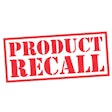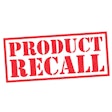
The U.S. Food and Drug Administration (FDA) has provided much flexibility to the animal food industry for implementing the Food Safety Modernization Act (FSMA). The question facility owners, operators or agents in charge should be asking is, “Are we now ready for FDA inspections considering these still relatively new and complex requirements?”
The Preventive Controls for Animal Food rule was published in September 2015, three years prior to the date official inspections begin. Meanwhile, FDA has truly held up its promise to “educate” before “regulating,” demonstrating flexibility in listening to the animal food industry’s request for staggered compliance dates for CGMPs (current good manufacturing practices) and preventive controls. Then, in another accommodating move, FDA delayed routine inspections of CGMPs and preventive controls.
Inspections begin
Despite FDA's accommodating approach, FDA has emphasized all along that its job is to protect public health and that it will rely on its new tools and authorities to protect human and animal consumers by keeping food with actual and potential hazards out of the marketplace, and the industry must not lose sight of that authority, nor overlook that the FSMA Preventive Controls for Animal Food regulation can be dauntingly complex in detail. Even if you have diligently read the regulation, including the lengthy preamble, taken Food Safety Preventive Controls Alliance (FSPCA) training and have studied all the guidance documents FDA has issued to date, something may have been missed in your approach to compliance. Use the example questions below as a quick test of the readiness of your food safety plan.
Food safety plan — test your readiness
- Who is ultimately responsible for the food safety plan, and whose signature must be on the document initially and at each update?
The Preventive Controls Qualified Individual (PCQI) may have signed the Food Safety Plan, and this is acceptable. However, it is not the signature required by the preventive controls rule. The regulation specifies that the Food Safety Plan must be signed by the owner, operator or agent in charge of the facility, essentially the highest decision-making authority on the site. This individual is to whom FDA is referring in the rule with the statements “You must conduct a hazard analysis” and “You must prepare or have prepared and implement a written Food Safety Plan.” The owner, operator or agent in charge of the facility may designate responsibility for conducting the hazard analysis and preparing the Food Safety Plan to the PCQI, but the ultimate responsibility for these actions remains with the owner, operator or agent in charge.
- Have you written and filed your Food Safety Plan even if no preventive controls were identified, and do you know if you can store the Food Safety Plan document off site?
Even if your hazard analysis identified no hazards requiring a preventive control, the hazard analysis must be written and retained in the Food Safety Plan. Although records of preventive controls monitoring and other management components may be stored off site, the Food Safety Plan must be kept at your facility; electronic filing is allowed if accessible from the facility.
- Who must assure that personnel are qualified as the PCQI and QIs? Do your training records adequately justify those qualifications?
All individuals, including temporary personnel, must have the education, training or experience, or a combination thereof, necessary to manufacture, process, pack or hold safe animal food as appropriate to the individual’s assigned duties, including supervision of those duties. These individuals are called “Qualified Individuals,” QIs in the regulation. The responsibility for assuring their qualification depends on the subpart of the regulation: performing the duties required by subparts B and F, CGMPs and Recordkeeping, must be assured by management. The owner, operator or agent in charge is responsible for assuring the qualification of individuals performing the duties required by subparts C and E, Preventive Controls and Supply Chain, and associated recordkeeping. The PCQI is a type of qualified individual, one which is qualified to develop and implement a food safety plan.
- As the owner, operator or agent in charge, have you assigned a back-up (or two) to handle the duties of the PCQI?
FDA does not announce inspections. Consider that in conducting the hazard analysis, the PCQI should have documented justifications of whether or not a preventive control was needed. Since the regulation is not specific on the level of detail in the justification, there may be confusion or uncertainty even in reading a written justification during the tenseness of an inspection. It is wise to have a back-up for the PCQI to be able to answer and give any explanation needed to FDA. The PCQI is also the individual who must review the process control monitoring records within seven working days, or write a justification for delay, so it is prudent to have a back-up to cover unexpected absences of the PCQI.
- Does your recall plan contain all the necessary elements spelled out in the rule?
Though technically not a part of a Food Safety Plan, a recall plan is associated with the Food Safety Plan and is required if any hazards requiring a preventive control were identified in the hazard analysis. Most, if not virtually all, facilities have a recall plan, but it is wise to ensure it includes all the components specified in the regulation, including notification of the public and effectiveness checks of recalled product. The participant manual for the FSPCA preventive controls course includes an example recall plan, which is an excellent template for comparison of your plan with the preventive controls rule requirements.
For more information
For more information on the details of compliance, FDA has provided a number of educational tools, notably the curriculum developed with the FSPCA and the FSPCA training courses available. FDA has indicated that these courses provide a background and foundation in not only the regulation but also in the scientific principles on which the regulation was based. Look also to the comprehensive guidance documents provided during 2016, 2017 and 2018, easily accessed on the FDA website, and to FDA’s technical assistance network, which fields questions on the regulation.
Rachel Montgomery is an FSPCA Lead Instructor with over 30 years’ experience as a food safety executive in large-scale manufacturing. Montgomery is the Principal of Simple Compliance Solutions LLC and a registered microbiologist.















